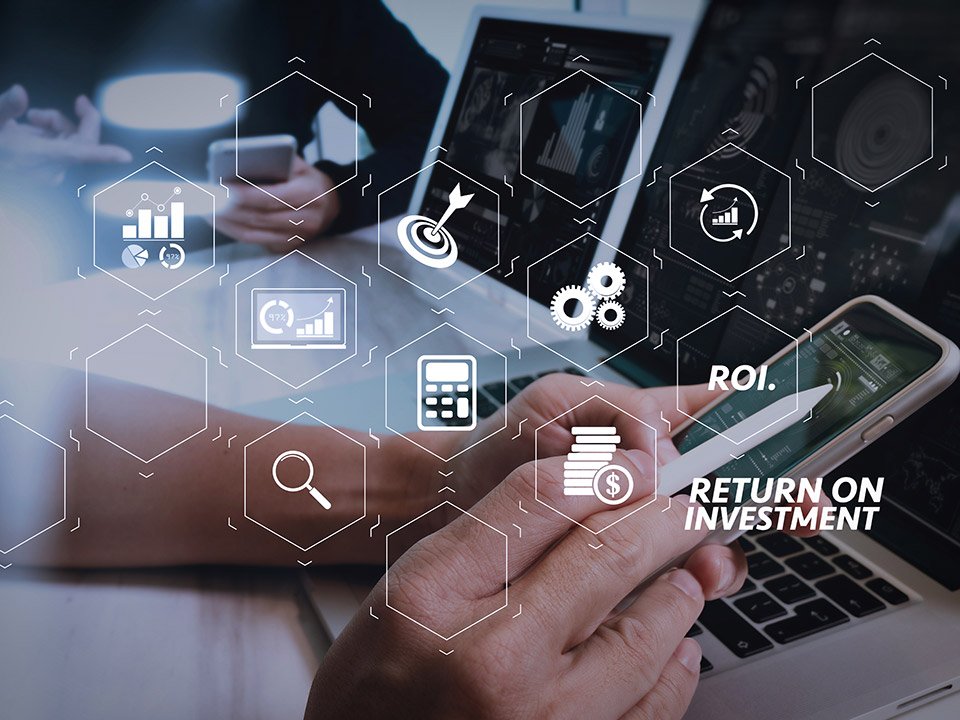
Which Social Media Channels Will Bring Your Business the Most ROI?
Which Social Media Channels Will Bring Your Business the Most ROI? The Latest Data and Insights From the Experts
It’s hard to believe that a website that began as a place for Harvard students to rank their classmates by attractiveness would later grow into one of the most popular and wealthiest websites in the world. Perhaps even more incredible is the dominating force that social media has become. They are a place to read the latest headlines, fundraise for a cause, look for a new job, send money to a friend, sell your used goods, share pictures of your quarantine cooking adventures, and check in on grandma. Some point to the pandemic as the driving force responsible for blurring the line between our digital and physical lives, but it’s hardly an exaggeration to say that line was blurred a long time ago. Social media was once just an extension of our ‘real’ lives but now it’s become a huge part of our daily lives. Marketers have taken note of that, which is why social media is now the top channel that marketers use.
The question is, which platform(s) should you be using to advertise for your business? There are many platforms that you can use, but quality will always trump quantity in the end. And while the importance of connecting with your target audience on their preferred platform can’t be stressed enough, it’s just as important to ensure that you’re actually seeing the results of your hard work pay off. Literally.
Social media is inherently volatile though, and the ‘best’ platform today could easily be eclipsed come 2026. As we pass the halfway mark of 2021, we’ve been able to draw some conclusions about what social media marketers can expect for what remains of Q3 and Q4 – and how to prepare for 2022.
Social Media Channels
Facebook doesn’t boast very humble origins, so it comes as little surprise that it would become the dominating channel – and hold onto that crown for almost two decades. Even if another platform should someday outshine it, the precedent it set and legacy it has created will arguably remain unrivaled. Bold statements, but just think about the cultural impact this website has had. Case in point, it has its own movie, like some sort of superhero origin story.
The reasoning for Facebook’s success for social media marketers would sound flimsy and counterintuitive in almost any other context- everyone else is doing it, so you should too. That is more or less what happened, as Facebook has been running ads almost from the get-go and launched Facebook Ads only three years later. Since then, the number of business accounts has snowballed to over 200 million businesses utilizing the site’s monstrous reach.
Facebook is constantly creating new features for its users, which easily translate into more opportunities for marketers to create and share content for their brand. Ads can be in text or video format, they can show up in someone’s Newsfeed or
A huge portion of the appeal can be attributed to how easy it is to connect with your target audience, thanks to the customizable audience tools it offers. It can be narrowed down by demographic, interest, or to people who have interacted with your page. What makes a Facebook ad worth clicking on though? Facebook marketing expert Mari Smith explained that “The best Facebook ads should look and feel as relevant and as timely in your News Feed as the posts you see from your friend”. In other words, don’t just give them something worth looking at, give your audience what they want to see. It’s still their personal space (sort of), so try to be a polite guest and ring the doorbell, not an intrusive one who lets themselves in.
Instagram is nowhere near Facebook’s level of popularity, and that’s probably a good thing for marketers to take advantage of. Facebook has something for everyone, whereas Instagram is a slightly more niche platform populated with dedicated users who all want the same thing- visual content. The most liked picture on that site is a photo of an egg. Yes, an egg. And how did that happen? When an account with the username world_record_egg posted the now-infamous picture in January of 2019 with the caption “Let’s set a world record together and get the most liked post on Instagram. Beating the current world record held by Kylie Jenner (18 million)! We got this.” The man behind it all was revealed to be an advertising creative named Chris Godfrey, and his accomplishment ‘broke the internet’ as they say. Even the man who took the picture, Serghei Platanov, was surprised to see his stock photo go from Shutterstock submission to viral sensation.
What can marketers learn from this? For starters, anything is possible. Second, Instagram really does have the audience required to elevate your content to new heights. About 90% of users on Instagram are following a business, and around 50% of users became interested in a brand after they saw it advertised on Instagram. And while Facebook still has many more users than Instagram, the younger platform is growing at a faster rate than Facebook is. As of July 2021, marketers can reach 305 million more users on Instagram than they could in July of 2020, making its advertising reach 28.5% higher. In that same timeframe, Facebook’s advertising reach has only increased by 7.7%.
The downside to Instagram is that it’s harder to track the metrics for ROI. A user could see one of your ads on the platform but not click on it, and engage with your brand later on by visiting your website directly. While the ROI might be harder to measure the potential is clearly undeniable. If an egg can do it, you can too.
There are over 750 million users on LinkedIn. Looking at the same timeframe of July 2020 to July 2021, its advertising reach has grown by 9.4% as the member count jumped by 66 million. That’s not significantly higher than Facebook’s 7.7%, but keep in mind that Facebook allows users 13+ to create an account while LinkedIn’s age limit starts at 18. Fewer people are able to join LinkedIn than Facebook, and fewer still have incentive as it’s strictly for professionals looking to network or advance their career, and yet it’s drawing more people than Facebook.
Why should you be one of those people? Good question, and here’s the answer – people want to connect with other people, not with businesses. Your LinkedIn profile can be used to strengthen your brand’s identity, credibility, and reputation all while building a community around it. You’re able to interact with people just like on a Facebook page and can join in on conversations with the people following you. This gives you a chance to position yourself as a thought leader and authority figure in your industry or niche. At its core marketing is about building relationships and LinkedIn was designed for that very purpose.
The other major reason to jump on that bandwagon is that aforementioned purpose, which is finding talent. The next Chris Godfrey could be on LinkedIn looking for someone to lend their mad creative genius to, and that someone could very well be you.
It would be remiss of us to neglect mentioning that LinkedIn has a variety of different marketing tools that you can experiment with to create a powerful strategy for lead generation, content distribution, and much more.
Final Thoughts for 2021 and Beyond
Marketing and advertising is risky business, pun intended. It’s also constantly growing and changing along with new technologies and consumer behavior. As a results based growth marketing company we are always on the hunt for research on the future of marketing, and have identified a few key areas that brands should be mindful of going forward.
Audience Empowerment
Visual content is powerful and important, and it doesn’t need to be branded to be effective. Engaging with your target audience necessary for building brand loyalty. Combine visual content with audience engagement and what do you get? User-generated content. User-generated content leads to sincere messaging and better relationships with your brand’s target audience. Both B2B and B2C businesses can benefit from having this type of content in their marketing strategy. Donna Moritz, a professional digital content strategist, famously said that “Every person holding a smartphone is on your marketing team. Empower them to share visual content about your brand”.
The 2020 global market for user-generated content was $2.97 billion, and is now at $3.58 billion. The revenue forecast for 2028 is $18.65 billion.
Stay Flexible
Google hit us with ten updates in 2021 alone. Any changes to the algorithm have the potential to affect your current ranking, and that’s something you must account for when crafting a marketing strategy. We already know that on February 1st of 2022 Google is going to remove query data from before September 1st, 2020 if it doesn’t meet its privacy thresholds.
Strengthen Existing Relationships
There isn’t a single business that didn’t take a blow in 2020, financial or otherwise. Customer retention should be everyone’s priority when strategizing to rebuild their business back to what it once was. Aside from directly engaging and using UGC, personalizing marketing is now on the rise. It’s shown to help with retention, engagement, brand loyalty, and revenue. Why is that? A seamless and consistent experience is very attractive. In fact, 83% of consumers report that they are willing to share personal information if it makes for a better experience. Personalized product and content recommendations, a multilingual website, an accessible website, and personalized video messages for customers are a great way to start.
Video Marketing
Video marketing exploded in 2020 due mostly to quarantine, and it’s definitely here to stay. In 2019, 2.63 billion people of any age and using any device accounted for global video viewership. By 2023 that number is predicted to increase to 3.14 billion people. Video marketing also holds great potential for connecting with influencers and developing an influencer marketing strategy, which is steadily growing in popularity amongst marketers.


